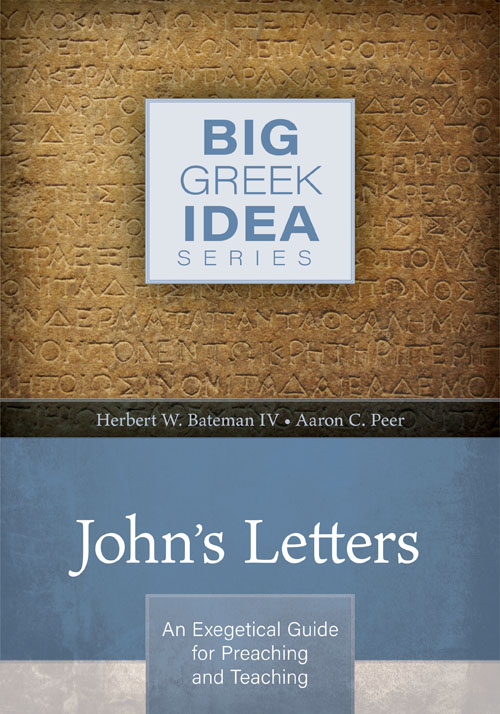 Today’s book is part of a series that I think many pastors and students of the Bible will find useful. It is the “Big Greek Idea” series, and this volume is John’s Letters.
Today’s book is part of a series that I think many pastors and students of the Bible will find useful. It is the “Big Greek Idea” series, and this volume is John’s Letters.
First, let’s take a look at some of the overall series features—the long-term plan here calls for the whole New Testament to be covered in differing volumes, and there are certain features that are intended as the definitive approach of the Big Greek Idea series. First, these are Greek-based works. Most traditional (English) Bible commentaries are English-based, with any work in the Greek used to explain the text, either correcting the chosen translation or supporting it, or amplifying it. Here, however, the primary text is the Nestle-Aland 28th edition Greek text. (Obviously, if it takes longer to produce the series than it takes for NA29 to come out, later volumes may use NA29.)
That may sound intimidating, but the text is given in a format similar to an interlinear as well as being presented in a clausal outline. Now, I know, we’re supposed to be so great at Greek that an interlinear arrangement (which shows a phrase in Greek, with a basic translation of that same phrase in English just underneath it) is unnecessary, but many people serving in ministry struggle with the vocabulary that left after the last final in seminary. This format enables the reader to clearly see the relationship between the Greek base text and the English translation. (And, if you like, you can always re-do the translation yourself.)
The use of clause-based outlines is also a beneficial arrangement. Rather than being sentence-driven or verse-driven, the text is broken down into units which are then shown in clauses. Each unit is headed by its “Big Greek Idea,” which is essentially the unifying concept in that section.
The unit is then also discussed in terms of the overview of the Greek structure. This notes any key repeated terms or important clauses. Further syntax explanations follow the clausal outline, with each clause broken down as well as significant portions of the syntax highlighted in ‘nuggets’.
Overall, the concept works well. The reader is given a mixture of seeing the basic Greek structure as well as seeing how the clauses and structure carry meaning in a larger unit. Do you need to know Greek to use this? It does help, but the clearly stated audience is people who are not great with Greek, and that is where I fit. This is perfect for me—uses and reinforces what I know and enables me to do better.
As to the specific volume: John’s Letters was an interesting introductory choice. There is more depth developed than I expected in 2 and 3 John, and the work through of 1 John, while not earth-shattering, was solid in explaining the text.
I think this series will be useful for ministers and Greek students.
I did receive a copy of this book in exchange for the review.


No comments:
Post a Comment
To deal with SPAM comments, all comments are moderated. I'm typically willing to post contrary views...but I also only check the list once a day, so if you posted within the last 24 hours, I may not be to it yet.